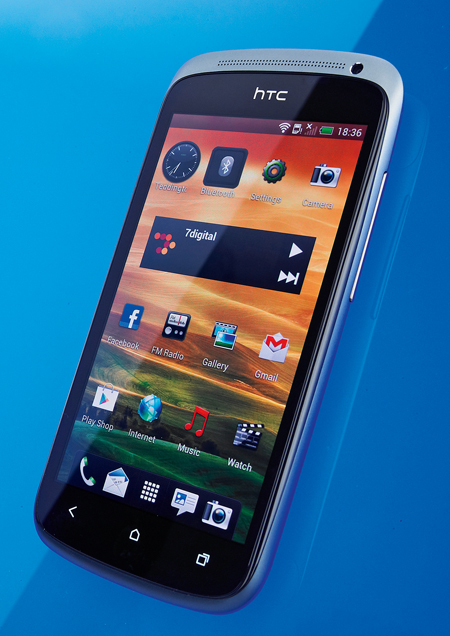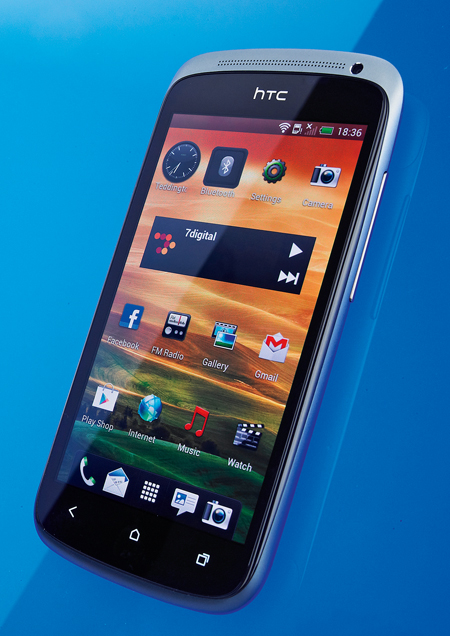What Hi-Fi? Verdict
A smartly turned-out, solidly built, pocket-friendly slab of superlative smartphone
Pros
- +
Great size, solid, sleek design
- +
super-fast interface and web browsing
- +
excellent video
Cons
- -
Sonically it’s bettered elsewhere
- -
maximum 16GB internal memory
Why you can trust What Hi-Fi?
Despite making its debut only at the start of the year, the HTC One S is, on paper, usurped by its quad core, big-screen brother, the HTC One X.
However, things are never that simple – and you would be foolish to turn your nose up at this more compact sibling.
The One S sports a 1.5Ghz dual core processor as opposed to the One X’s quad core. There’s 1GB of RAM, 16GB of internal storage, plus the latest Android 4.0 Ice Cream Sandwich operating system.
An 8MP, 1080p camera takes care of pictures and video, while there’s also aptX Bluetooth streaming, DLNA and FM radio. The 4.3in Super AMOLED screen has a 960 x 540 resolution.
The One S has advantages over its larger stablemate. A more hand-friendly 4.3in touchscreen gives it a little more screen real estate than the iPhone 4S but without making things a two-hand job.
HTC One S: Interface
The layout and look of the interface is classic HTC. There’s no SD card slot nor is the battery removable, but the USB output does double as an MHL (mobile high definition video link) slot allowing you to connect to your TV with a cable.
The main interface is a touchscreen affair, the three permanent touch controls just beneath the screen – back, home and recent apps – are the closest the One S gets to a button.
There are seven home pages to customise, with options for apps, widgets and shortcuts. Moving around the interface is slick and speedy, with no lag as you browse.
The smaller, lower-res screen makes it easier to drive, and many apps remain optimised for dual-core phones. And you won’t find an Android phone that loads pages faster than the One S.
Text looks clear and the speed at which it scrolls up and down is weighted nicely. There’s Flash support too; all told, it’s an excellent internet browsing experience.

HTC One S: Video and audio
Video performance, also, is great. The 4.3in screen delivers natural, accurate colours with realistic skin tones. The video experience rivals anything here.
Sonically it falls a little short of the best around – including its bigger brother. There’s decent detail and subtlety but it’s not quite as organised and busier tracks sound cluttered and lacking a little room to breathe.
Beats Audio infiltrates every inch of the HTC One S, as it does with the One X. We tend to prefer the audio playback with the Beats Audio (bass and power) mode off.
You should experiment. The HTC FM radio is simple to use and picks up signal well enough for a mobile device. HTC’s music player is well laid out, though it can’t hold a candle to Apple’s simple, clean interface, while the accompanying widget is neat.
HTC One S: Connectivity
Of course today’s smartphones are endlessly capable and there’s plenty more besides here.
DLNA connectivity is neatly integrated, simply popping up within your music, movie or photo client and offering to send the content to a connected device, while aptX Bluetooth means streaming audio sounds noticeably better with an aptX Bluetooth speaker or set of headphones than compared with standard Bluetooth.
VerdictThis is one of HTC’s flagship phones, and the specification proves far better in reality than it might look on paper.
HTC’s take on the Android 4.0 OS is delivered at lightning speed, video playback is very good and music more than adequate.
If you’re not smitten with the literal big boys in the Android family, the HTC One S could be the phone for you.
See all our smartphone Best Buys
What Hi-Fi?, founded in 1976, is the world's leading independent guide to buying and owning hi-fi and home entertainment products. Our comprehensive tests help you buy the very best for your money, with our advice sections giving you step-by-step information on how to get even more from your music and movies. Everything is tested by our dedicated team of in-house reviewers in our custom-built test rooms in London, Reading and Bath. Our coveted five-star rating and Awards are recognised all over the world as the ultimate seal of approval, so you can buy with absolute confidence.


